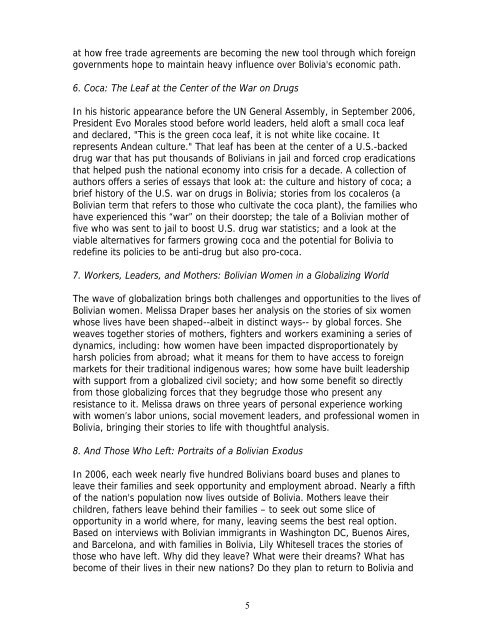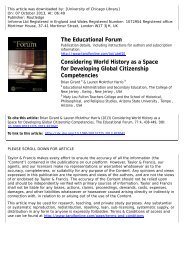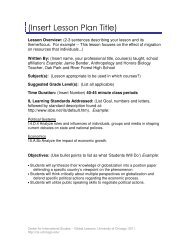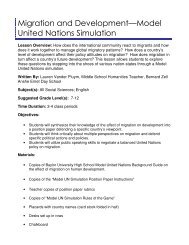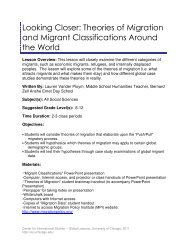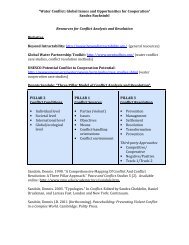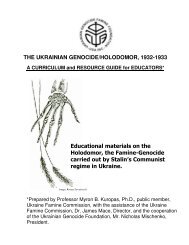Book Summary (PDF) - Center for International Studies
Book Summary (PDF) - Center for International Studies
Book Summary (PDF) - Center for International Studies
You also want an ePaper? Increase the reach of your titles
YUMPU automatically turns print PDFs into web optimized ePapers that Google loves.
at how free trade agreements are becoming the new tool through which <strong>for</strong>eigngovernments hope to maintain heavy influence over Bolivia's economic path.6. Coca: The Leaf at the <strong>Center</strong> of the War on DrugsIn his historic appearance be<strong>for</strong>e the UN General Assembly, in September 2006,President Evo Morales stood be<strong>for</strong>e world leaders, held aloft a small coca leafand declared, "This is the green coca leaf, it is not white like cocaine. Itrepresents Andean culture." That leaf has been at the center of a U.S.-backeddrug war that has put thousands of Bolivians in jail and <strong>for</strong>ced crop eradicationsthat helped push the national economy into crisis <strong>for</strong> a decade. A collection ofauthors offers a series of essays that look at: the culture and history of coca; abrief history of the U.S. war on drugs in Bolivia; stories from los cocaleros (aBolivian term that refers to those who cultivate the coca plant), the families whohave experienced this “war” on their doorstep; the tale of a Bolivian mother offive who was sent to jail to boost U.S. drug war statistics; and a look at theviable alternatives <strong>for</strong> farmers growing coca and the potential <strong>for</strong> Bolivia toredefine its policies to be anti-drug but also pro-coca.7. Workers, Leaders, and Mothers: Bolivian Women in a Globalizing WorldThe wave of globalization brings both challenges and opportunities to the lives ofBolivian women. Melissa Draper bases her analysis on the stories of six womenwhose lives have been shaped--albeit in distinct ways-- by global <strong>for</strong>ces. Sheweaves together stories of mothers, fighters and workers examining a series ofdynamics, including: how women have been impacted disproportionately byharsh policies from abroad; what it means <strong>for</strong> them to have access to <strong>for</strong>eignmarkets <strong>for</strong> their traditional indigenous wares; how some have built leadershipwith support from a globalized civil society; and how some benefit so directlyfrom those globalizing <strong>for</strong>ces that they begrudge those who present anyresistance to it. Melissa draws on three years of personal experience workingwith women’s labor unions, social movement leaders, and professional women inBolivia, bringing their stories to life with thoughtful analysis.8. And Those Who Left: Portraits of a Bolivian ExodusIn 2006, each week nearly five hundred Bolivians board buses and planes toleave their families and seek opportunity and employment abroad. Nearly a fifthof the nation's population now lives outside of Bolivia. Mothers leave theirchildren, fathers leave behind their families – to seek out some slice ofopportunity in a world where, <strong>for</strong> many, leaving seems the best real option.Based on interviews with Bolivian immigrants in Washington DC, Buenos Aires,and Barcelona, and with families in Bolivia, Lily Whitesell traces the stories ofthose who have left. Why did they leave? What were their dreams? What hasbecome of their lives in their new nations? Do they plan to return to Bolivia and5


